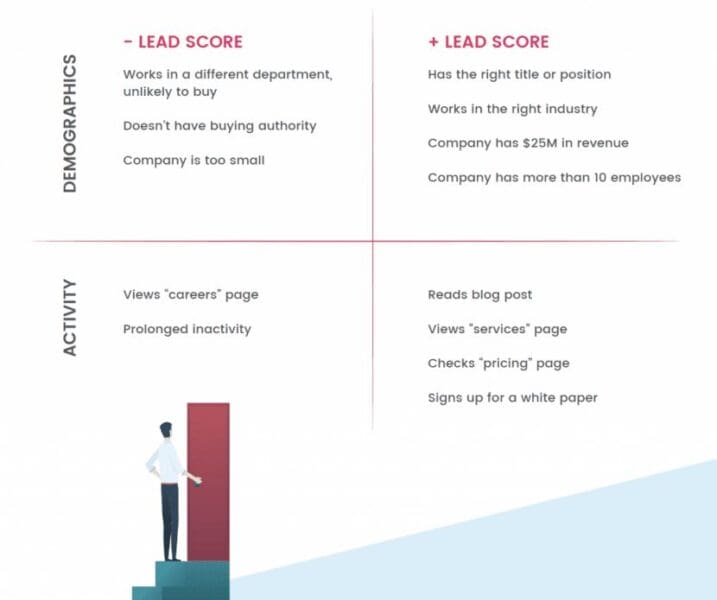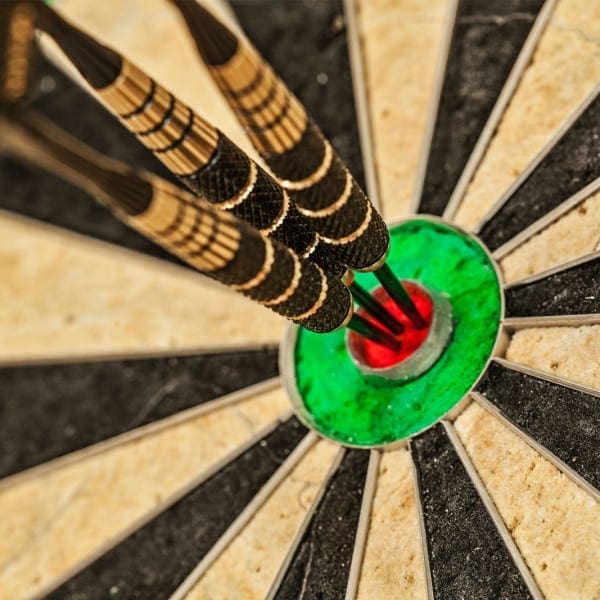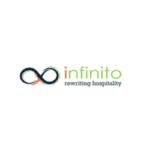 When it comes to nurturing group business, hotel sales teams must be productive and efficient. Yet, the volume of requests for proposals is soaring and Sales Managers often struggle to know which opportunity to focus on first.
When it comes to nurturing group business, hotel sales teams must be productive and efficient. Yet, the volume of requests for proposals is soaring and Sales Managers often struggle to know which opportunity to focus on first.
Group sales success comes from effectively allocating resources to the most promising leads.
Proper allocation requires lead scoring, or a consistent process that evaluates leads and gives an objective score that helps prioritize attention. Lead scoring ensures that Sales Managers don’t waste time on unqualified leads and focus first on leads that are likely to convert.
An effective lead scoring model has three key benefits, which results in happier staff, more satisfied clients, and more revenue:
- Your sales team is more productive, as attention goes to the most promising prospects first.
- Your lead scoring approach gives marketing a clear view into what makes a high-quality lead for your sales team. This establishes a shared formula between marketing and sales about what makes a good lead.
- Your hotel books more revenue, as qualified leads get the attention they need more quickly. Satisfaction increases all around: management, sales teams, and clients feel better and get more done.
One of the key metrics to watch is how much you spend on acquiring group business. Kalibri Labs found that: “the cost of customer acquisition has risen dramatically over the last 5 years as the proportion of intermediated events has increased, equating to over $4B in costs and is expected to reach close to $8-10B by 2022. The total costs can reach upwards of 35% of room revenue per group when all costs are considered.”
Here are some tips to develop a lead scoring strategy that will help drive success and allow your team to prioritize the more qualified/high priority leads.
Tip 1 – Develop a lead scoring strategy
The objective of a lead scoring strategy is to provide an objective comparison between prospects to help sales devote energy to the most qualified leads first. To do this, you must have a clear system to qualify leads according to how far down the funnel they are. All things equal, prioritize those leads that are primed for conversion.
To get to that objective measure, you’ll need to do a little self reflection. Start by answering the following questions:
- How big is your hotel?
- Who are our ideal customers?
- What’s important to them?
- What channels do we engage with them on?
- What analytics data do we have around customer behavior on our website?
Once you’ve adequately answered those questions, now it’s time to develop a lead scoring strategy for your hotel. Don’t stress too much about choosing a single one. You’ll want to blend options and build a strategy that seems best for your needs. This may include only one or perhaps all five of the tactics below; choose what works for you and your team. The secret is to start scoring as quick as you can. And don’t overthink it — simple-but-accurate is preferable to thorough-but-unwieldy!
Tip 2 – Choose your parameters
Once you have an idea of strategy, the next step is to choose your parameters. These criteria determine how you’ll score each prospect. As you can see below, there really are many options. It’s easy to go down the rabbit hole, never to emerge again!
The best way to decide which parameters move the needle for your business is to look closely at your ideal guest profiles: Which interactions mattered most on their guest journey? Which attributes correlate with higher close rates? Focus on those.
Recency of interaction: more recent interactions are better.
Type of interaction: an email subscription is worth more than a like on a tweet.
Pages viewed on the website: certain pages may be more indicative of urgency.
Number of interactions: an engaged prospect is best.
Channel interaction: certain channels are better; e-mail is best.
Urgency of request: time-sensitive requests may merit higher scores.
Size of prospect’s company: each property has its own sweet spot; know yours and score ideal customers more highly.
Value of proposal: again, know your sweet spot and score accordingly.
Business vs personal email: personal emails may be great but know what’s right for your hotel.
Stay frequency: a loyal guest may be more inclined to convert than one unfamiliar with your property.
Tip 3 – Assign your points
Now it’s time to define how you score your leads. Every company has its own model for assigning points. It’s usually simplest to base these on a 100-point system. Each time a prospect completes an action, or associates with a specific attribute, his/her score adjusts up or down according to your predetermined formula.
To determine how many points to assign to each event, refer back to your earlier answers about your best customers. What do they have in common? Consult your CRM to identify shared characteristics of successfully-converted leads. It’s equally revealing to find attributes of leads that didn’t convert. You’ll want to assign lower point values to leads with those characteristics.
Your close rates should also influence how you weight individual events. If the close rate of a completed RFP form on your website is 50%, and your overall close rate across all leads is 5%, then the “completed RFP form” attribute should reflect that it’s 10 times your close rate.
As you create your own scorecard, remember the objective: the right points to the right actions so your sales team can devote enough attention to your ideal customers first.
The ideal blend is one that awards points for the highest-value actions and attributes, without leading to score inflation. It’s not advisable to award points for every email open or each interaction on social media, as those actions are low-impact and only inflate a prospect’s score unnecessarily. The goal is to have an accurate score that reflects a prospect’s readiness to buy — and each lead is a bit different. Some may need more time to engage with your brand and others may be quicker to buy. That’s why you need to understand what makes your targeted segments take action and assign the right amount of points to the highest-value indicators for each segment.
Tip 4 – Degrade points
Once you’ve assigned points for certain activities, you also need to degrade points. Under certain circumstances, a lead may act in a way that signifies waning interest, so your lead scoring model should reflect both positive and negative events.
Score degradation ensures that lead scores don’t end up over-inflated. One example of this would be an unsubscribe or a bounced email: it’s a negative event that should be reflected with negative points. Another would be the time since last engagement: as a prospect’s goes cold, their points should decay. To prioritize recency, you may want to consider an expiration date on all points that matches your sales cycle. If it takes an average of 90 days to convert a lead, then consider a 90 day expiration on points.
Tip 5 – See your threshold
The threshold is the point at which a lead becomes warm enough for the sales team to engage. Ideally, you’ll set automatic triggers in your marketing automation tool and/or CRM software to notify you of when your leads have reached this threshold.
Once a lead has reached the determined threshold, they can then set up a call to get a better understanding of this prospects needs and use this information to further qualify the prospect (and logging this new information into the CRM, of course!).
You may also consider setting other thresholds that trigger actions, such as a piece of content emailed to a lead that hits a score of 50. These types of actions can help move the lead along and build momentum towards conversion.
Tip 6 – Automate, automate, automate!
Once you’ve done all the hard work, let automation do its thing! Your lead scoring framework will then be automatically applied to each relevant action, and your sales team will be notified when a prospect crosses the predetermined threshold.
Keeping the automation on track takes some practice. For example, you’ll need visibility into new lead magnets (such as whitepapers) and marketing campaigns so that lead scoring automations reflect current initiatives. Any “leakage”, as far as actions that aren’t attached to an automated lead score, reduces accuracy. The devil is in the details!
Lead scoring can also be an effective mechanism for automated nurturing as well, serving as a benchmark to trigger key messages or nurturing campaigns.
Key takeaways
To recap, here’s an overview of how to score leads like a pro:
- Develop a lead scoring strategy
- Choose your parameters
- Assign your points
- Automate wherever you can!
With these steps complete, you’ll have the momentum you need to put lead scoring to work for you. Lead scoring is not a static thing, so set a calendar reminder to review it regularly. You’ll not only want to check that the automations are working as they should, but you’ll also want to revisit your assumptions around how to assign points. Things change, and your hotel business objectives will evolve. Allow yourself the space to adjust and reflect the current state of affairs — that’s how to score leads like a pro!





























